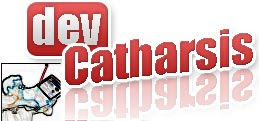I'm totally of my natural environment here - only posting about this because this kind of approaches are in my wish-list, and probably because the company I work on has a division that follows one of this EA methodologies.
Here's what InfoQ as to say about it:
The advantages of Partitioned Iterative Approach, according to Sessions are:
- Faster Time To Value (TTV). Sessions means that this is a more important success factor in the business world than measuring Return On Investment (ROI). A vertical slice can be delivering perceived value long before completion of the rest of the project, even before it has a positive ROI. "If you can show, for example, that within the first month, the library has already decreased the length of customer calls to the help desk by 20%, you are showing value, even though you may be years from showing a positive ROI for the overall project.
- Increases the overall chances of a successful project, due to the possibility to apply the lessons learned in earlier iteration.
Sessions concluded his partitioned approach proposal by giving three rules for success for an enterprise architecture, summarized here:
- Start with low-hanging fruit. The important thing in developing an enterprise architecture is to demonstrate success. This will help build momentum for the larger goal.
- Leverage economy of small scale. Use a relative small group attacking a well-defined partition of the enterprise.
- Centralize interoperability, decentralize implementations. A centralized enterprise architectural organization is necessary. But the central organization needs to focus on the right issues, and not get bogged down on issues that are irrelevant. The general rule of thumb is that decision that impact interoperability should be centralized. Decisions that impact implementations should be decentralized.


No comments:
Post a Comment